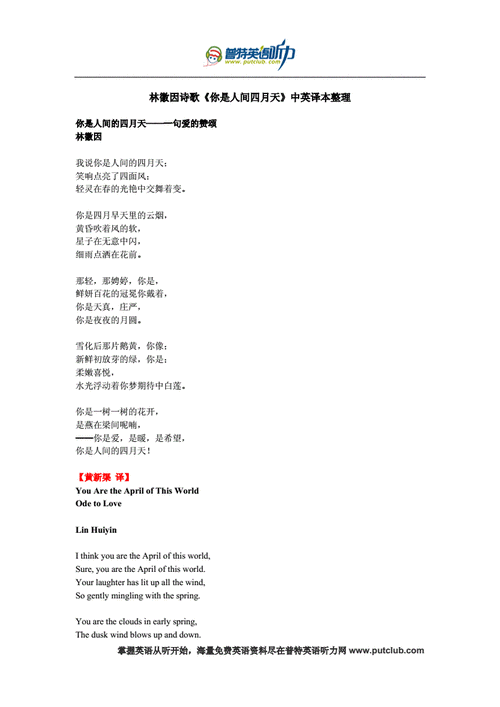英文小短文带翻译唯美励志
Title: Translation of English Short Stories
Translation of literary works, especially short stories, requires a delicate balance between fidelity to the original text and adaptation to the target language's nuances. Here are some guidelines to ensure a successful translation:
1.
Understanding the Source Text:
Before beginning the translation, thoroughly read and understand the source text. Pay attention to the author's style, tone, and narrative techniques.
2.
Maintaining the Essence:
Aim to convey the essence and meaning of the original story rather than translating word for word. This includes capturing the characters' emotions, the atmosphere, and the underlying themes.
3.
Adapting to the Target Audience:
Consider the cultural and linguistic differences of the target audience. Adapt idiomatic expressions, cultural references, and jokes to make them relevant and understandable to the readers.
4.
Translating Dialogue:
Dialogue plays a crucial role in conveying characters' personalities and relationships. Translate dialogue in a way that reflects the characters' voices and speech patterns while remaining natural in the target language.
5.
Preserving Style and Tone:

Strive to maintain the author's style and tone in the translation. Whether the original text is formal, humorous, or poetic, ensure that the translated version evokes a similar response from the readers.
6.
Attention to Details:
Pay attention to details such as punctuation, sentence structure, and literary devices used in the original text. These elements contribute to the overall impact of the story and should be carefully translated.
7.
Seeking Feedback:
After completing the translation, seek feedback from native speakers or literary experts. Their input can help identify any areas that need improvement and ensure the quality of the final translation.
Remember, translating literary works is not just about converting words from one language to another; it's about capturing the magic and essence of the original text and making it accessible to a new audience. With careful attention to detail and creative adaptation, a wellexecuted translation can bring a story to life in a new language.
关键词:简单英文故事小短文带翻译文学的英文英文短文加翻译英文小短文带翻译唯美励志
上一篇:人形机械全文txt
下一篇:小车出险需要什么证件
